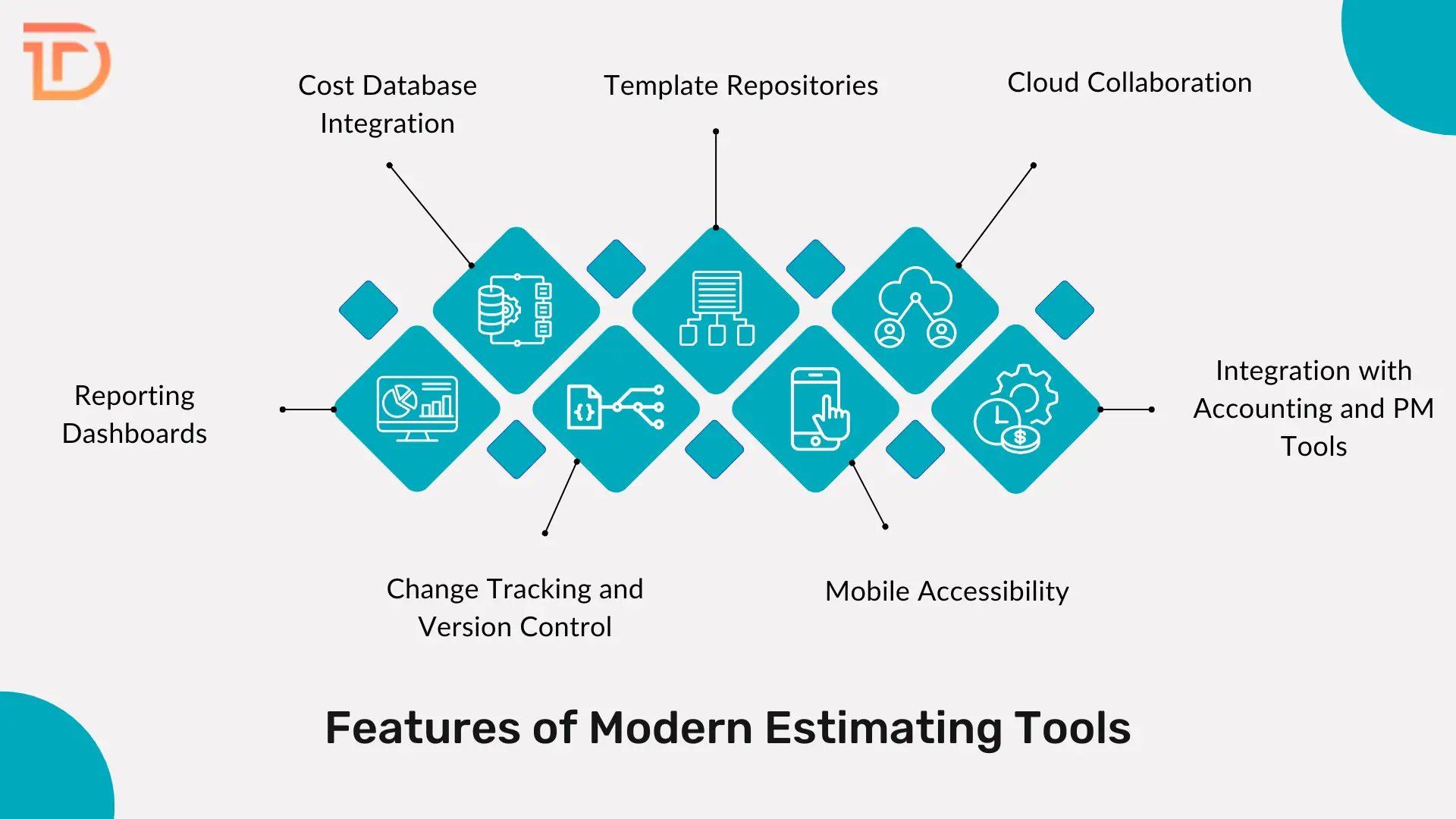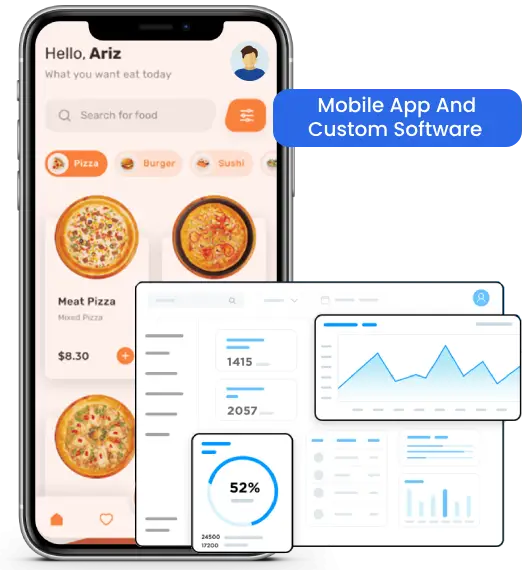The rapid evolution of the construction industry demands smarter tools to stay competitive. Surging material costs, stricter regulations, and aggressive timelines have reshaped the way projects are planned and executed. Manual estimation no longer suffices as complexity grows. Digital tools are becoming essential rather than optional. Contractors must streamline operations, reduce errors, and win bids through speed and accuracy. Estimates created from spreadsheets or paper doesn’t fit the demands of project owners, investors, and stakeholders. Estimating software provides a powerful upgrade by bringing automation, intelligence, and clarity to the forefront. As project sizes scale and contract terms tighten, smart estimating processes play a central role in ensuring profitability and efficiency. In this blog, we will uncover why construction estimating software is crucial in 2025, how it transforms contractor workflows, and what to look for when choosing the right solution.
What is Construction Estimating Software?
Construction estimating software is a digital tool that enables contractors to calculate the total costs involved in completing a construction project. This includes materials, labor, equipment, subcontractor fees, overhead, and more. Unlike traditional methods, which often involve complex spreadsheets or manual calculations, estimating software streamlines this process through automation and accuracy. It also helps with project planning, bid preparation, cost tracking, and budget control. By storing reusable templates, maintaining updated pricing databases, and integrating with project management platforms, the estimation software simplifies what was once a time-intensive process. Its ability to generate real-time cost estimates ensures that every quote reflects actual market rates and project-specific factors.
Construction Estimating Software Market Size
Global demand for estimating software shows an impressive upward trend. A report by Grand View Research estimates a market value of USD 1.57 billion in 2022, with an anticipated compound annual growth rate (CAGR) of 10.2 percent through 2030. Forecasts predict market size rising to approximately USD 3.5 billion by 2030. Region-wise, North America holds around 35 percent share in early 2020s due to widespread adoption among mid-size contractors. Asia Pacific and Latin America are emerging markets with a projected CAGR exceeding 12%, attributed to rising infrastructure investment. Market segmentation reveals that residential estimating software contributed nearly USD 550 million, while commercial and industrial segments combined for around USD 1.02 billion. Those numbers highlight a global shift toward smarter estimation and more efficient bid processes.
What is the Need for Software Estimation?
Contractors today face mounting pressure to stay competitive, meet tight deadlines, and manage rising costs. To navigate this landscape successfully, estimation software becomes an essential asset rather than a luxury. The reasons below highlight how it transforms day-to-day operations and long-term outcomes.

Quote Precision
Accurate cost predictions reduce underbidding, eliminate unnecessary losses, and strengthen client confidence. Contractors gain the ability to quote with clarity, factoring in real-time pricing and labor variables. This builds a stronger reputation and encourages repeat business through consistently dependable proposals.
Enhanced Workflow
Automated processes eliminate repetitive data entry and reduce manual errors. Estimators can replicate templates, reuse previous calculations, and share files instantly across departments. This creates an agile team environment focused on strategy, execution, and value delivery, not administrative bottlenecks.
Speed-To-Bid
Fast-moving markets demand quick responses to project requests. Estimating software enables teams to create accurate, professional bids in a fraction of the time. Contractors can respond to more RFPs, increasing win rates while reducing turnaround pressure and missed opportunities.
Collaboration Efficiency
Cloud-based access allows teams and stakeholders to review, edit, and approve estimates from anywhere, cutting email threads and version control issues.
Reduced Risk
Unexpected cost hikes and scope changes often lead to disputes or budget overruns. With built-in cost tracking, automatic updates, and version control, software reduces risk by keeping all stakeholders aligned and financial forecasts up to date.
Competitive Advantage
Digital estimating tools give contractors real-time access to market rates, customizable dashboards, and cloud-based collaboration. This transparency and speed elevate a contractor’s profile in the bidding process, positioning them as both modern and highly dependable in a crowded industry.
Manual Estimations vs. Digital Tools
Traditional estimation relies heavily on spreadsheets, calculators, and reference books. Teams juggle multiple workbooks and formulas prone to errors. Manual updates require copy-pasting and manual cross-checks, causing wasted time and inaccurate revisions. Collaborative efforts suffer as live data sharing becomes difficult, creating confusion over the latest version.
Digital tools offer real-time updates to pricing, access to industry-wide libraries, and automatic rollups of sub-estimates. Shared cloud platforms let multiple stakeholders collaborate without any version conflicts. Visual reporting features help team members and clients review data easily. When revisions occur due to scope changes, updates propagate across the entire estimate automatically. This consistency and efficiency make digital options far superior. Contractors gain both speed and accuracy without compromising clarity, making digital tools the leading method for modern construction estimation.
Why Traditional Estimating Methods Are Holding Contractors Back?
Reliance on spreadsheets and paper-based estimates exposes businesses to inefficiency, lost revenue, and reputational risks. Formula errors and outdated pricing tables cause inaccurate bids and profit erosion. Manual revisions waste time, preventing contractors from pursuing new opportunities. Data silos delay decision-making, especially when multiple departments need to estimate access. Audit trails are weak when revisions lack proper tracking. Reporting metrics disappear in unstructured formats, leaving firms blind to budget trends or scope to creep. Clients notice delays and inaccurate figures, damaging relationships and risking future contracts. As contracts grow complex, lacking digital estimates becomes a liability. That’s why reliance on traditional methods hinders growth, reduces output, and limits competitive positioning in modern construction markets.
Must-Have Features in Modern Estimating Tools
To meet modern construction demands, estimating software must address daily site-level challenges while aligning with broader project goals. The following are the must-have features of an effective construction estimating tool:

Cost Database Integration
Real-time pricing sourced from local vendors ensures estimates reflect current market conditions. This accuracy minimizes budgeting errors and reduces risks caused by outdated data, allowing contractors to respond faster and more confidently to material cost fluctuations.
Template Repositories
Standardized templates for common trades, labor categories, and material sets help teams create uniform estimates across projects. This reduces redundancy, enhances speed, and maintains consistency across all documents, streamlining onboarding for new team members as well.
Cloud Collaboration
Cloud access enables multiple stakeholders to view, comment, and update estimates simultaneously. This eliminates delays caused by file transfers and reduces miscommunication across departments, subcontractors, and clients, leading to faster approvals and smoother project handovers.
Integration with Accounting and PM Tools
When estimating software integrates with accounting and project management platforms, data flows seamlessly across workflows. This eliminates double entry, improves financial oversight, and helps teams make timely decisions grounded in accurate, synced project information.
Mobile Accessibility
Mobile-enabled features let users conduct quantity takeoffs, upload site photos, and input changes directly from the field. This mobility accelerates communication between office and site, improving the reliability of field-based estimates and approvals.
Change Tracking and Version Control
Version history tracks every modification made to an estimate, documenting who changed what and when. This accountability prevents errors, reduces disputes, and ensures that all stakeholders are aligned on the most current version of a bid.
Reporting Dashboards
Visual dashboards present key insights like cost breakdowns, variance reports, and bid performance. These analytics help managers spot trends, control costs proactively, and make smarter decisions that support long-term business growth and operational efficiency.
The Long-Term ROI of Adopting Estimating Software
Spending on an online estimating tool rewards contractors over time. Accuracy gains eliminate bid underpricing that erodes margins, while automation reduces overhead and workload. Faster bid cycles mean firms can respond to a higher volume of opportunities. Transparency in data inspires stakeholder trust, supporting future business expansion. Integration between estimation and accounting systems minimizes administrative tasks and ensures financial alignment. Software becomes a repository for cost history and best practices, accelerating onboarding and knowledge transfer. Over the years, improved performance has resulted in higher profits, stronger client relationships, and consistent growth. Investment in such systems yields compound returns and establishes contractors as reliable, modern professionals.
Common Misconceptions About Estimating Software
Misunderstandings often delay contractors from embracing valuable digital tools. Breaking through these myths opens doors to smarter workflows and stronger financial performance.
- Only for Large Enterprises: Modern estimating tools scale to suit solo contractors and small businesses, offering features that align with tighter budgets, smaller teams, and niche project scopes without compromising precision or performance.
- Implementation Takes Months: Cloud-native solutions deploy rapidly and require minimal infrastructure. Teams can often be up and running within days, leaving behind the drag of manual spreadsheets or outdated legacy systems.
- Users Must Be Tech Savvy: Intuitive dashboards and step-by-step guidance make estimating software accessible even to field staff or office teams with limited technical background, minimizing the need for extensive training sessions.
- Subscription Costs Add Up: Compared to the expense of rework, bid errors, or inefficient time usage, most platforms deliver better value. Lowered overhead and higher estimate accuracy yield long-term cost efficiency.
- Software Doesn’t Reflect Real Conditions: Custom pricing inputs, manual overrides, and integration with local supplier data ensure that estimates match real-world project demands, whether they shift regionally or daily on-site.
Choosing the Right Construction Estimating Software for Your Business
Selecting the right platform requires careful consideration of departmental needs, company size, and project scope. Vendors offer a range of subscription plans and modular add-ons. Look for intuitive interfaces that reduce training time and quick deployment options. Strong customer support from a reputable provider ensures quick resolution of issues. Integration capability with accounting or resource planning tools prevents fragmented workflows. Industry-specific templates or cost libraries reduce setup time. Cloud versus local hosting decisions should reflect data control and access requirements. Consider vendors with frequent updates, security patching, and scalable licensing models to accommodate growth without increasing costs significantly.
The Bottom Line
Survival within an evolving construction landscape requires embracing tools that enhance efficiency, accuracy, and strategy. Contractors relying on outdated methods risk missed bids, reduced margins, and diminished credibility. Estimating software offers an upgrade path—automation, collaboration, and intelligent cost insights. Clear data, faster responsiveness, and streamlined workflows give contractors a decisive edge. Future opportunities belong to those who embrace change and invest in smarter practices.
Dreamer Technoland, a custom software development company, presents a powerful, easy-to-use estimating software solution customized for contractors. We offer expert onboarding and three months of free post-launch support, ensuring smooth implementation—all starting at an impressive monthly price of just $200. Our estimating software equips contractors with digital tools to estimate faster, reduce risk, and grow profitably.
Secure your position as an industry leader with our Estimating Software. Schedule a free personalized demo to discover how smarter estimation enhances bidding accuracy, improves planning, and boosts operational efficiency. Move your processes online, gain real-time pricing clarity, and enjoy three months of complimentary post-launch support—experience the future of construction estimating today.







